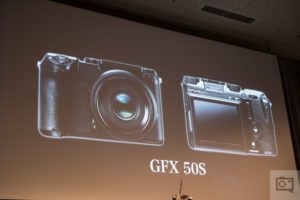
The Hasselblad X1D-50c is a 50MP mirrorless medium format camera and is an important product for the storied Swedish company. Hasselblad is a company with a long history of making high-end cameras.
Its boxy 6 x 6 format cameras (latterly dubbed the 'V' series) were beloved of generations of photographers and perhaps reached their apogee when used to capture man's first ventures to the moon.
The ravages of history, the decline of film and changes of both management and ownership have seen the company make sporadic attempts to expand beyond its core, high-end professional medium format market, but the X1D is the move that best fits with the brand's strengths and history.
The first camera in the 'XCD' system, the X1D is built around 44 x 33mm medium format sensor (or 'cropped' medium format if you're going to demand that digital directly mimics film formats). The assumption has to be that it's a similar 50MP chip to the one included in Ricoh's Pentax 645Z and Fujifilm's GFX 50S. What's interesting is how different each camera ends up being.
Key Features:
50MP 44 x 33mm medium format CMOS sensor
12. 4MP preview JPEGs or '3FR' 16-bit losslessly compressed Raws
2. 36M-dot electronic viewfinder
920k-dot (VGA) 3. 0" touchscreen
Designed to use leaf-shutter lenses
Tethered shooting over USB 3. 0 or Wi-Fi
Full TTL compatibility with recent Nikon Speedlights
Whereas the 645Z is medium format DSLR, built around Pentax's existing 645 film system, and Fujifilm's GFX is a DSLR-shaped mirrorless camera with a focal plane shutter, Hasselblad has used the expertise it's gained in high-end studio cameras to create the smallest camera of the three by pushing the shutter out into the lenses. This move not only keeps the camera small, it also means that the camera can sync with strobes across its entire shutter speed range.
To an extent it reminds us of the original Sony a7, which appeared to be the bare minimum amount of camera built around a full frame sensor. The Hasselblad does the same thing, but with a sensor 70% larger. However, what will be interesting to see is whether the Hasselblad is able to take full advantage of that extra sensor size if its lenses are significantly slower than those available for the smaller, 'full-frame' format (which, in theory at least, gives you the chance to open the aperture, let in more light and cancel out all of the larger sensor advantage, so long as you don't run out of dynamic range).
Initially, Hasselblad has promised three lenses for the XCD system: a 30mm F3. 5 (24mm equiv), a 45mm F3. 5 (35mm equiv) and a 90mm F3. 2 (70mm equiv). As with so many things in life, what you gain on one side (the faster sync speeds of a leaf shutter), you lose on another (it's increasingly hard to get a leaf shutter to quickly open and close across a large distance).
. dpreview.com2017-4-4 18:22



